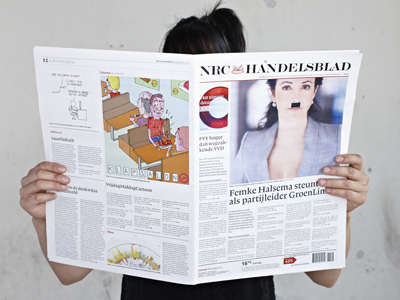Many designers may be visuospatial thinkers, but a growing number of graduates is becoming involved in the ways in which design is discussed in talks, blogs and tweets. On Thursday 25 October we will therefore be tackling design writing and blogging. As an example, in het project Anonimus et Libertas Eva Storck [see image, photographer: Rene van der Hulst] points out the anonymity of blogging, which she believes is debasing public debate. The extreme views and personal points of view expressed anonymously through blogs rarely lead to clarifying new insights.

Roy Verbakel is also asking a few critical questions about new media, but in his case he focuses on the lack of physical tools. He has developed a special ‘brain pen’ with which he is drawing attention to ‘the thinking hand’; the idea that a thought process develops alongside the physical act of writing.
During the afternoon, the platform Design Debates (an initiative taken by Design Academy Eindhoven with MU, Onomatopee, Premsela, Capital D, Stichting Alice, and Krabbedans) will be organising a debate at the Designhuis, centred on the question How much design can we digest?